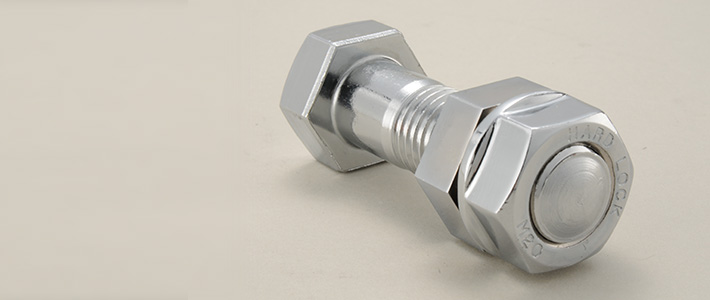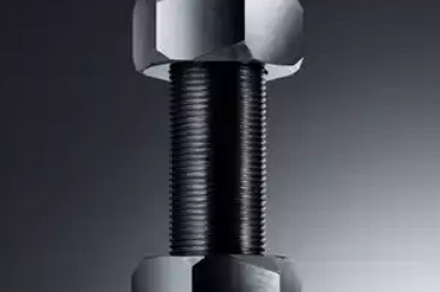
News


The latest Model N700A of Nozomi Train running on Japan Tokaido Trunk Line adopts a type of special nut all the way from the protective wheel cover to the whole train body. Nozomi Train uses a total of 20 thousand pieces of "Hardlock Nut" that "never loosens at all".
"What is that?" You might ask. President of Hardlock Industry, the developer, explains, "Simply put, it is like hammering a wedge in between a bolt and nut." Hardlock Nut is divided into a double layer structure: the lower convex nut and the upper concave nut. By deviating the convex part of the lower nut from the central point and then connecting it with the upper concave nut, you achieve the effect equivalent to hammering a wedge onto the lower nut. Once Hardlock Nut is installed, it will never loosen again, and it is even no problem if you want to uninstall and install it repeatedly for dozens of times.
The former model of Hardlock Nut is U Nut. After graduating from college, the president became a valve technical designer. In 1961 he established a company hoping to supply U Nuts to distributors, only to end up with a backlash of doubt that the nuts won't sell out. In those contiguous days of refusal, he left behind a box at the front gate of every factory in Osaka. Each box contains 100 assorted sizes of U Nuts. At first the president had a difficult time in personnel and R&D expense, but later orders came in and 4 years later his business was on track. In 1973 his company grew to JPY 1.5 billion in revenue with 30 employees. The president recalls, "At that time the Japanese economy was skyrocketing and the industry trend was to pursue mass-production and labor cut."
Back then the slogan of U Nut was likewise "the nut that never loosens", and in fact it sold quite well. However a customer came in with a complaint that U Nut would actually loosen. Later the president discovered the U Nut loosens slightly to the vibration caused by machines. He says,"U Nut was originally designed to bring satisfaction to customers, but I never thought it would end up upsetting the customer. That is when I decided make a genuine anti-loosening nut."
However he did not have a clue at first. One day during his walk around the neighborhood, he came across a Torii (gateway at the entrance to a shrine) and found its vertical pillars and horizontal beam are cross-connected by a wedge. The minute he arrived home, he hammered a wedge in between a bolt and nut and found the nut would not loosen at all. However, in reality it is impossible to hammer a wedge onto each and every single bolt and nut and even try to mass-produce it. Therefore, he came up with an idea to divide a nut into tow layers.
At that time, Hanshin Electric Railway adopted U Nut which no matter how would definitely loosen due to the fact that a train passes every few minutes. Consequently operators had to do maintenance of the nuts at midnight. In light of that, the president pleaded the station for one last chance, and after the station installed the newly-developed Hardlock Nut onto the rail tracks they found Hardlock Nut had not loosened for 3 consecutive months. Afterwards Hardlock Nut was further sold to other stations and received positive acclaim as in "reduced labor cost and increased safety". Later, Hardlock Nut was further used on acoustic panels across railways (which would loosen with the use of average nuts), and even on the whole train bodies, eliminating the trouble of regular nut change. Central Japan Railway Company even announced it would only use Hardlock Nut in the future.
The world of railroad pursues maximized safety, and the Japanese SMEs are undoubtedly the core supporting the world of safety.

Subscribe











